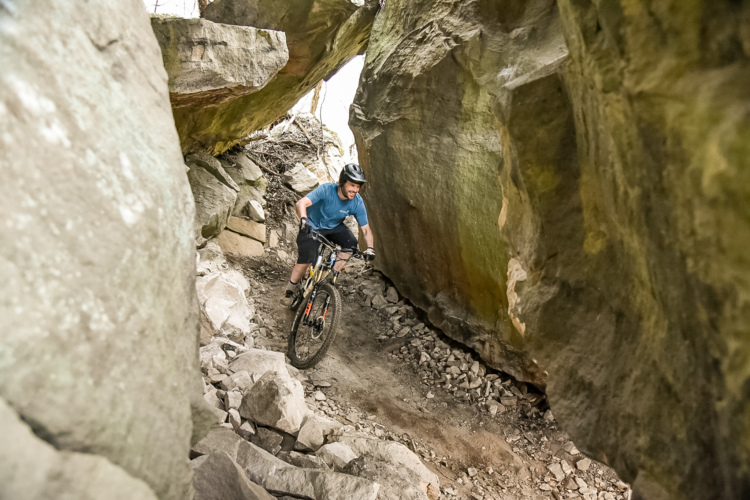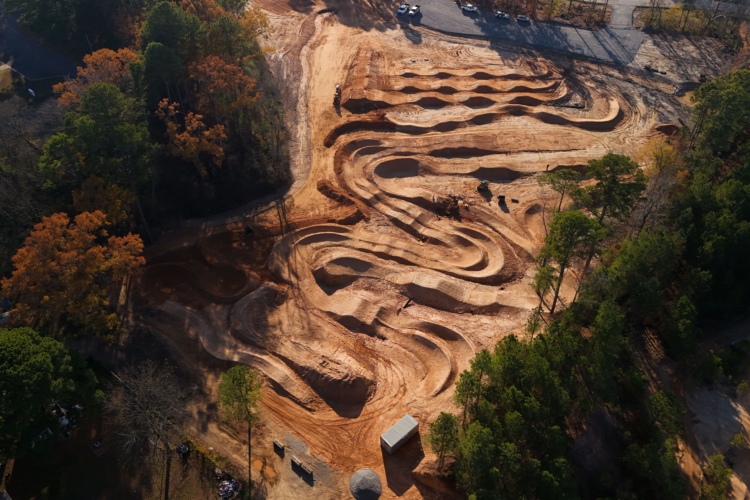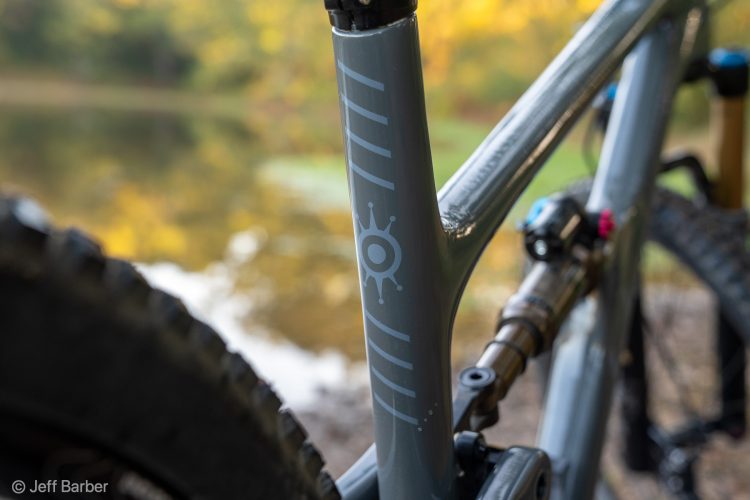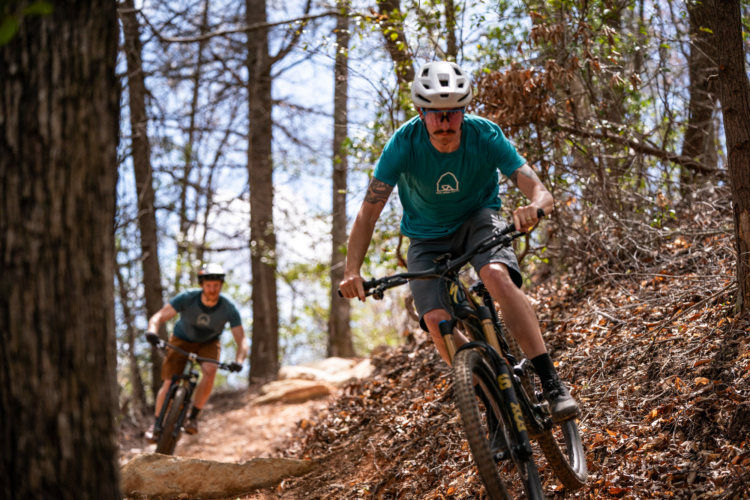
Pocahontas County in West Virginia is best known as the home of Snowshoe Mountain, which has held numerous top-tier downhill and cross-country races, including the UCI World Cup. What many riders might not realize is that the region is home to a bevy of other trail systems, earning it a Silver-Level Ride Center designation from IMBA.
But Pocahontas County isn’t satisfied with a mere silver medal — they’re aiming for gold.

27 miles of new singletrack coming in the Monday Lick trail system
In their quest to reach Gold-Level status, a new trail system known as “Monday Lick” is currently under construction on US Forest Service land near the town of Marlinton. When complete, Monday Lick will boast 27 miles of bike-optimized singletrack — a stark contrast to the historic trails in the rest of the national forest.
“This Monday Lick trail system is really going to be that key piece of bicycle infrastructure to get that whole family out there on the trail,” said Adam Munich, Digital Marketing Coordinator for Rock Solid Trail Contracting. After Munich rode the existing backcountry trails and the downhill trails at Snowshoe for himself, “I can honestly say […] if I were a new mountain biker in the region, I probably wouldn’t want to get into mountain biking or go ride anywhere local just because of — the technical, the route, the elevation, everything is pretty rough.”
Appalachian Dirt and Rock Solid Trail Contracting are both building trails at Monday Lick. I spoke with Munich specifically about Rock Solid’s work in the area.
Rock Solid is currently building two of the most exciting trails in the network, which run from the lower loops to the top of a nearby mountain ridge. One of the trails will be rated blue, and one will be rated black. While both of the trails are technically two-way, multi-use singletrack trails with a bike-optimized flavor, Munich envisions riders climbing the blue trail and descending the black trail. Alternatively, there’s a gravel forest service road that can be used as a climb to reach the top of the ridge.
The fun begins when it’s time to go down. Munich says the black trail is “a really long descent — about 5.5 miles. It’s not pure descent — it’s a ridgeline trail. So it’s going to follow the contours a bit, but it is a primary downhill trail.”
As for the character of the trail, “It’s going to be a black trail, but it’s still going to be a flow trail,” said Munich. “So it’s going to give that newer rider that experience of being out in the backcountry, getting comfortable with high-speed bike handling skills, but it’s not going to be just bombing down a trail and, ‘oh, here’s a 180-degree switchback’ or just something really tight. So it is really going to be that really accessible trail to the area that’s also a destination.”



East Coast shuttle runs
According to Munich, Greenbrier Bikes, the local bike shop in Marlinton, is planning to run shuttles to the top of the Monday Lick trail system once it’s complete. The runs off the top will offer about 1,000 vertical feet of descending — not huge, but not too far off of nearby Snowshoe Mountain, which offers roughly 1,500 vertical.
Private bike parks are popping up all along the East Coast, serving up shuttle laps on purpose-built flow trails, but offering private shuttles on public land is a model that is most commonly seen in the West. While there are some similar shuttle services operating on public lands along the East Coast, it is a relative rarity.
The bike-optimized stacked-loop trail system, flow trails, proposed shuttle service, and burgeoning infrastructure are all tactics straight out of the mountain bike destination playbook that have been employed in other parts of the nation. We’re witnessing destinations like Pocahontas County and beyond build on the shoulders of giants. Instead of inventing everything themselves through trial and error, they’re able to utilize what has worked for other destinations in the past, skip the failures that didn’t, and use the successful tactics immediately.
The trails at Monday Lick are still under construction, and all trails will remain closed until the system officially opens to the public. According to Munich, the trails will open either later this fall or in spring 2025… it all depends on the weather and how the build wraps up.
I’m sure the locals are waiting with bated breath. With such visionary development happening, we can’t wait to see the mountain bike destination that Pocahontas County becomes!





















6 Comments
Jul 19, 2024
FYI - Take Aim Cycling out of Harrisonburg VA offers permitted legal shuttle service in the George Washington National Forest. Reddish Knob is our iconic descent, but there are plenty others including Death Star, Heartbreak, Lookout MTN and more. All on public lands.
Jul 19, 2024
Jul 19, 2024
Jul 25, 2024
I think investment should center around the National Park (Beckley/Fayetteville) since it is easily accessible via I-64/77 and US19.
Jul 23, 2024
Jul 20, 2024